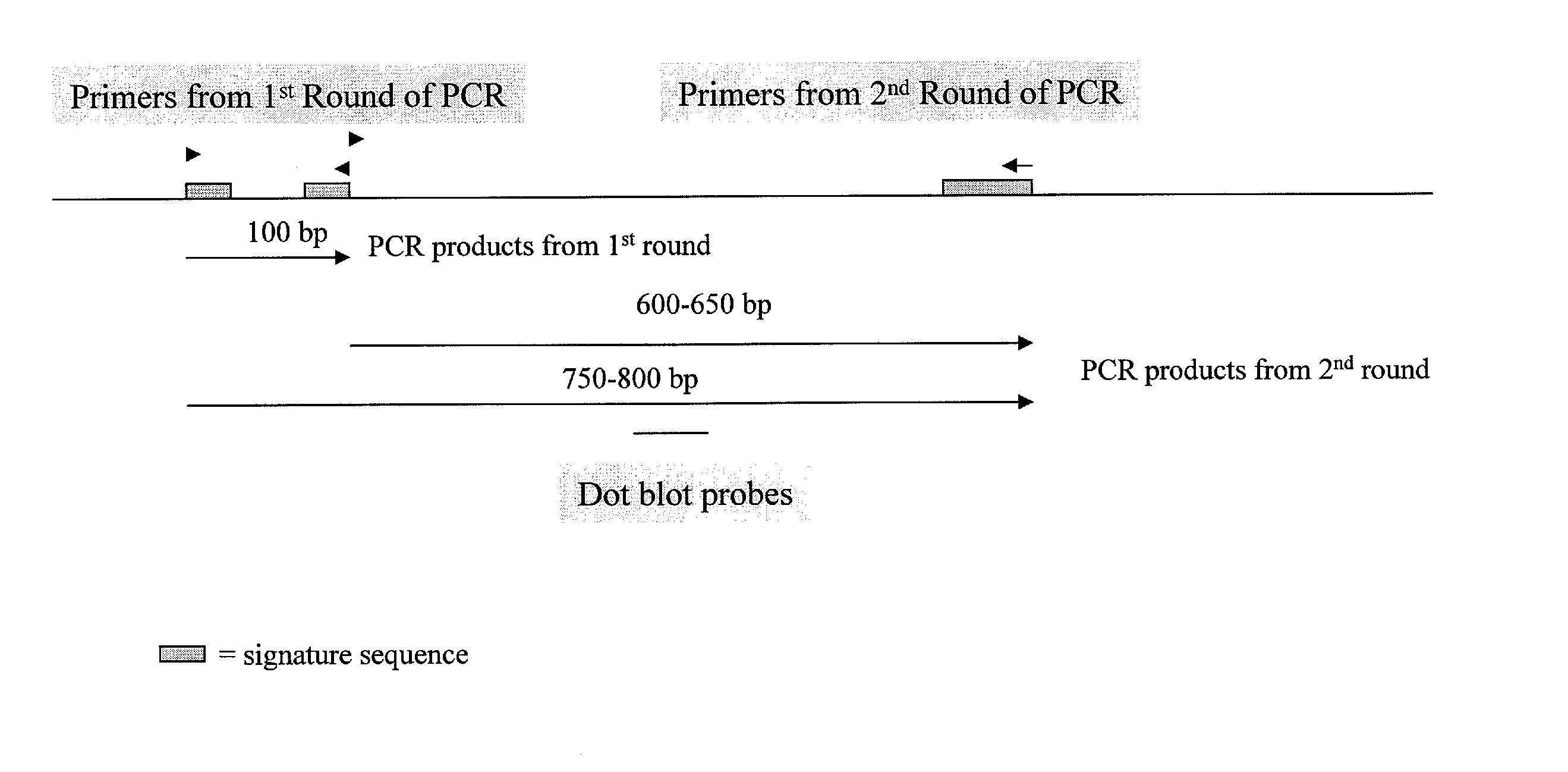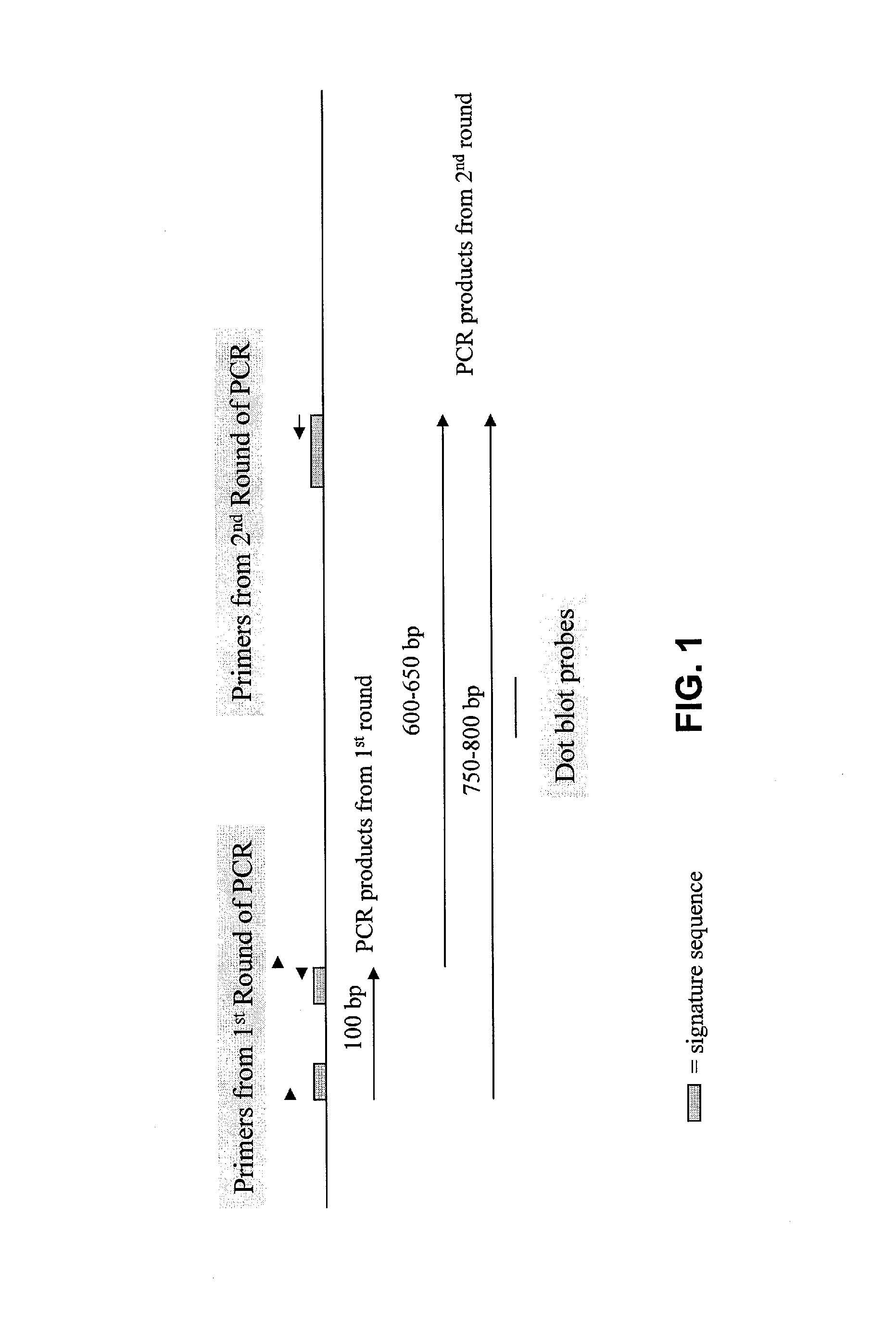Method for identifying novel genes
a gene and composition technology, applied in the field of methods and compositions for identifying novel genes, can solve the problems of increasing the concern of regulators and environmental hazards associated with environmental hazards, corn rootworm feeding damage and boll weevil damage can be economically devastating to agricultural producers, insect pests are a major factor in the loss of agricultural crops, etc., to achieve rapid and efficient screening
- Summary
- Abstract
- Description
- Claims
- Application Information
AI Technical Summary
Benefits of technology
Problems solved by technology
Method used
Image
Examples
example 1
Identification of Novel Pesticidal Genes
[0102] Glycerol stocks of various Bt strains were streaked onto LB agar plates. The following day, a single colony from each strain was inoculated into 2 mL of TB media per well of a 48-well plate. The plates were incubated overnight at 28° C. and 250 rpm. The cells were harvested by centrifugation at 6,000×g for 10 minutes at room temperature. The cell pellets were resuspended by vortexing in P1 suspension buffer (Qiagen). Cells were lysed and neutralized with P2 and P3 buffers, respectively, and the lysates were transferred to TurboFilters (Qiagen) with vacuum applied. The filtrates were bound to QIAprep plates and washed with PB and PE buffers (Qiagen). The plasmid preparations were eluted with EB buffer and collected in 96-well plates.
Degenerate Oligonucleotide Primer Design for the First Round of PCR
[0103] In order to identify novel Bt genes, both those that are homologous to known Cry genes as well as pes...
PUM
| Property | Measurement | Unit |
|---|---|---|
| Tm | aaaaa | aaaaa |
| Tm | aaaaa | aaaaa |
| Tm | aaaaa | aaaaa |
Abstract
Description
Claims
Application Information
 Login to View More
Login to View More - R&D
- Intellectual Property
- Life Sciences
- Materials
- Tech Scout
- Unparalleled Data Quality
- Higher Quality Content
- 60% Fewer Hallucinations
Browse by: Latest US Patents, China's latest patents, Technical Efficacy Thesaurus, Application Domain, Technology Topic, Popular Technical Reports.
© 2025 PatSnap. All rights reserved.Legal|Privacy policy|Modern Slavery Act Transparency Statement|Sitemap|About US| Contact US: help@patsnap.com


